A super high heart rate means you’re burning more than fat

You’re committed to your exercise program. You’ve got your cushy sneakers on your feet and a fancy new heart rate monitor on your wrist. But when that tracker displays your heart rate, do you actually know what to do with that information?
Advertisement
Cleveland Clinic is a non-profit academic medical center. Advertising on our site helps support our mission. We do not endorse non-Cleveland Clinic products or services. Policy
For committed athletes, your heart rate zone can tell you a lot about the intensity of your workout and the health benefits to your body. But it takes a bit of math and some understanding of your heart rate to appreciate what those numbers mean for your health.
“Your heart rate zone tells you how hard you’re working, and what you’re utilizing for energy,” explains exercise physiologist Chris Travers, MS. “The higher your heart rate gets, the more you're burning carbohydrates and protein for energy, and the less you’re using fat for energy.”
We talked with Travers about heart rate zones — where your heart rate should fall for the most health benefits — how to calculate your zones and if they’re really all that important.
Heart rate zones are based on a percentage of your maximum heart rate. The easiest way to calculate your max heart rate is using the age-adjusted formula 220 – your age = max heart rate.
But lately, exercise experts have turned to the Karvonen formula, which takes into account your resting heart rate, too. That creates a more personalized understanding of your exercise intensity. More to come on that.
Heart rate zones are essentially an indication of how hard your heart is working to pump your blood and keep up with the demands of what you’re doing. The higher your heart rate, the higher the heart rate zone you’re in and the harder your body is working to keep up.
Advertisement
There are five heart rate zones, ranging from zone 1 to zone 5.
Here’s a look at the five heart rate zones and what they mean for your workout.
Like the Pirate’s Code, heart rate zones are less like “rules” and more like “guidelines.” Your personal physiology isn’t entirely ruled by the laws of mathematics. There’s some give and take here.
So, you may see heart rate zones described in slightly different ways and using different names. That’s OK. There are a lot of gray areas. The bottom line is that as your heart rate climbs, your body reacts to keep up with your needs.
| Zone | Also known as | Intensity level | % of max heart rate | Fuel source |
|---|---|---|---|---|
| Zone 1 | Warm-up, recovery, easy. | Moderate-low. | 50% to 60% | Fat. |
| Zone 2 | Aerobic, endurance, base, light. | Moderate. | 60% to 70% | Fat. |
| Zone 3 | Tempo, threshold, cardio, moderate. | Moderate-high. | 70% to 80% | Fat, carbs and protein. |
| Zone 4 | Lactate threshold, redline, hard. | High. | 80% to 90% | Carbs and protein. |
| Zone 5 | Anaerobic, V02 max, peak, maximum. | Very high. | 90% to 100% | Carbs and protein. |
| Zone | ||||
| Zone 1 | ||||
| Also known as | ||||
| Warm-up, recovery, easy. | ||||
| Intensity level | ||||
| Moderate-low. | ||||
| % of max heart rate | ||||
| 50% to 60% | ||||
| Fuel source | ||||
| Fat. | ||||
| Zone 2 | ||||
| Also known as | ||||
| Aerobic, endurance, base, light. | ||||
| Intensity level | ||||
| Moderate. | ||||
| % of max heart rate | ||||
| 60% to 70% | ||||
| Fuel source | ||||
| Fat. | ||||
| Zone 3 | ||||
| Also known as | ||||
| Tempo, threshold, cardio, moderate. | ||||
| Intensity level | ||||
| Moderate-high. | ||||
| % of max heart rate | ||||
| 70% to 80% | ||||
| Fuel source | ||||
| Fat, carbs and protein. | ||||
| Zone 4 | ||||
| Also known as | ||||
| Lactate threshold, redline, hard. | ||||
| Intensity level | ||||
| High. | ||||
| % of max heart rate | ||||
| 80% to 90% | ||||
| Fuel source | ||||
| Carbs and protein. | ||||
| Zone 5 | ||||
| Also known as | ||||
| Anaerobic, V02 max, peak, maximum. | ||||
| Intensity level | ||||
| Very high. | ||||
| % of max heart rate | ||||
| 90% to 100% | ||||
| Fuel source | ||||
| Carbs and protein. |
For the average exerciser, you can turn to your body’s cues to understand whether you’re getting a workout. If you’re carrying on a normal conversation without effort, your heart rate isn’t all that elevated. If you’re struggling to keep up with talking, you know your heart rate is spiking.
“Some people find it motivating to know their heart rate zone. If it helps you keep on track with your exercise program, that’s OK. For everyone else, the talk test works just fine,” Travers notes. “Can you talk and carry on a conversation when you’re exercising? Then you’re in a moderately easy zone. Not everyone should stress about the numbers, especially if that becomes a barrier to enjoying exercise.”
If you thrive on numbers and a quantitative understanding of your exercise program, it’s time to get nitty-gritty. It takes a bit of math to find your target heart rate zones, so get your calculator handy.
The Karvonen formula to calculate your training zone is this:
([Maximum heart rate – resting heart rate] x % intensity) + resting heart rate = training zone.
To simplify some, here’s another way to look at it:
Advertisement
That’s a lot of information, so let’s talk about it piece by piece.
Max heart rate = 220 – your age
Your max heart rate represents the highest number of beats per minute that your heart can handle safely.
The most accurate way to know your max heart rate is by doing an exercise stress test or VO2 max test. During the test, you’ll be hooked up to a heart rate monitor while you run as fast as you possibly can on a treadmill or pedal on an exercise bike. The heart rate you achieve at your “breaking point” is your maximum heart rate.
Or you can get a good estimate of your maximum heart rate with a simple calculation: Subtract your age from 220.
For example, a 40-year-old would have an estimated max heart rate of 180 (that is, 220 - 40 = 180).
Of course, not all 40-year-olds — or 20-year-olds or 60-year-olds — are at the same level of physical fitness. So, your actual max heart may vary some from this calculation. But if you don’t have a more precise max heart rate from an exercise stress test or VO2 max test, it’s a good starting point to understanding what you should consider your threshold for safe exercise.
Advertisement
If your max heart rate is your heart rate when you’re pushing yourself to your limits, your resting heart rate is the opposite.
Your resting heart rate represents how many times your heart beats in a minute when you’re sitting or lying still. For most people, that’s somewhere in the range of 60 to 100 beats per minute. Finely tuned athletes will typically have a lower resting heart rate than people who aren’t as physically fit.
Many wearable heart rate monitors can tell you your resting heart rate at any given moment. Or they may show you your resting heart rate based on an average over several days.
You can also find your resting heart rate by feeling your pulse on your wrist and counting the number of beats in a minute. Travers suggests doing this first thing in the morning for the most accurate results.
Heart rate reserve = max heart rate – resting heart rate
Your heart rate reserve is the difference between your maximum heart rate and your resting heart rate.
Let’s go back to our 40-year-old from above. Assume their resting heart rate is 70 beats per minute (bpm).
Their heart rate reserve would be 180 (max heart rate) minus 70 (resting heart rate), which equals 110. Keep this number handy for the next step.
Advertisement
Once you know your heart rate reserve, it’s time for, yes, more math.
You’ll find your target heart rate for each heart rate zone by multiplying your heart rate reserve by the percentage of max heart rate that each zone represents:
And now for the last step: Add back in your resting heart rate.
And, voila! You have your target heart rates for each zone.
Here’s a breakdown for the 40-year-old in our example so you can see the full math equation in action:
| Zone | Max heart rate (220 – age) | Heart rate reserve (max heart rate – resting heart rate) | Heart rate reserve x % zone intensity (low end per zone) | + Resting heart rate | Target heart rate (low end per zone) |
|---|---|---|---|---|---|
| Zone 1 | 220 – 40 = 180 | 180 – 70 = 110 | 110 x 0.5 = 55 | 55 + 70 = 125 | 125 bpm |
| Zone 2 | 220 – 40 = 180 | 180 – 70 = 110 | 110 x 0.6 = 66 | 66 + 70 = 136 | 136 bpm |
| Zone 3 | 220 – 40 = 180 | 180 – 70 = 110 | 110 x 0.7 = 77 | 77 + 70 = 147 | 147 bpm |
| Zone 4 | 220 – 40 = 180 | 180 – 70 = 110 | 110 x 0.8 = 88 | 88 + 70 = 158 | 158 bpm |
| Zone 5 | 220 – 40 = 180 | 180 – 70 = 110 | 110 x 0.9 = 99 | 99 + 70 = 169 | 169 bpm |
| Zone | |||||
| Zone 1 | |||||
| Max heart rate (220 – age) | |||||
| 220 – 40 = 180 | |||||
| Heart rate reserve (max heart rate – resting heart rate) | |||||
| 180 – 70 = 110 | |||||
| Heart rate reserve x % zone intensity (low end per zone) | |||||
| 110 x 0.5 = 55 | |||||
| + Resting heart rate | |||||
| 55 + 70 = 125 | |||||
| Target heart rate (low end per zone) | |||||
| 125 bpm | |||||
| Zone 2 | |||||
| Max heart rate (220 – age) | |||||
| 220 – 40 = 180 | |||||
| Heart rate reserve (max heart rate – resting heart rate) | |||||
| 180 – 70 = 110 | |||||
| Heart rate reserve x % zone intensity (low end per zone) | |||||
| 110 x 0.6 = 66 | |||||
| + Resting heart rate | |||||
| 66 + 70 = 136 | |||||
| Target heart rate (low end per zone) | |||||
| 136 bpm | |||||
| Zone 3 | |||||
| Max heart rate (220 – age) | |||||
| 220 – 40 = 180 | |||||
| Heart rate reserve (max heart rate – resting heart rate) | |||||
| 180 – 70 = 110 | |||||
| Heart rate reserve x % zone intensity (low end per zone) | |||||
| 110 x 0.7 = 77 | |||||
| + Resting heart rate | |||||
| 77 + 70 = 147 | |||||
| Target heart rate (low end per zone) | |||||
| 147 bpm | |||||
| Zone 4 | |||||
| Max heart rate (220 – age) | |||||
| 220 – 40 = 180 | |||||
| Heart rate reserve (max heart rate – resting heart rate) | |||||
| 180 – 70 = 110 | |||||
| Heart rate reserve x % zone intensity (low end per zone) | |||||
| 110 x 0.8 = 88 | |||||
| + Resting heart rate | |||||
| 88 + 70 = 158 | |||||
| Target heart rate (low end per zone) | |||||
| 158 bpm | |||||
| Zone 5 | |||||
| Max heart rate (220 – age) | |||||
| 220 – 40 = 180 | |||||
| Heart rate reserve (max heart rate – resting heart rate) | |||||
| 180 – 70 = 110 | |||||
| Heart rate reserve x % zone intensity (low end per zone) | |||||
| 110 x 0.9 = 99 | |||||
| + Resting heart rate | |||||
| 99 + 70 = 169 | |||||
| Target heart rate (low end per zone) | |||||
| 169 bpm |
It’s easy to assume that pushing yourself to your max is the most effective way to lose weight, right? More sweating, more huffing, more puffing, more weight shedding, right?
Wrong.
That’s because the higher your heart rate gets, the more you’re using carbohydrates and protein — not fat — for your fuel.
“For weight loss and endurance-building, it’s best to exercise in the zones that rely on fat for fuel — zones 1 through 3,” Travers emphasizes.
“When your heart rate increases, you’re not taking in as much oxygen. You can’t oxidize fat fast enough when you have less oxygen. So your body turns to another, more readily available energy source to provide fuel for you — glycogen, also known as carbohydrates. You can do short bursts in higher, more intense heart rate zones to push your body. Overall, though, it’s best to spend longer periods closer to 50% to 70% of your max heart rate for the most efficient results.”
What’s more is that strength-training is also important for fat loss.
“Having more muscle mass boosts your metabolic rate (the number of calories you burn at rest),” Travers adds. “That means that with more muscle, you’ll burn more calories throughout the day, which will help promote weight loss.”
For most people, what matters most for your heart health is that you make an effort to move more. Any exercise, for any length of time, will improve your cardiovascular health.
That’s because your heart is a muscle. And like any other muscle in your body, it depends on you to keep it strong.
“If you’re moving your heart rate higher than what it is at rest, you’re helping improve your cardiovascular health,” Travers says. “You're improving your cardiovascular health when you raise your heart rate from what it is at rest and what it is during your normal daily activity. That’s the key.”
Raising your heart rate above your resting point, even a little, strengthens your heart. And it helps to improve blood pressure, cholesterol, blood sugar and more.
For optimal cardiovascular health, the American Heart Association recommends at least 150 minutes per week of moderate-intensity aerobic activity (zones 1 to 3). Or if you want to get more benefit in less time, aim for 75 minutes per week of vigorous aerobic activity (zones 3 to 4). Or split the difference and do a combination of the two.
If tracking your heart rate makes you happy and motivates you, go for it. But if heart rate calculations become a stumbling block, forget about them and focus instead on how your body feels when you’re exercising.
Talk with a credible healthcare provider, like an exercise physiologist or physical therapist, for personalized advice about heart rate zones and their impact on your exercise program.
Learn more about our editorial process.
Advertisement

The exercise — which you’ve probably been doing since grade school — can be intimidating, but proper form can help

Exercise lowers risk for heart conditions, improves mental health and reduces visceral fat that can compromise your organs
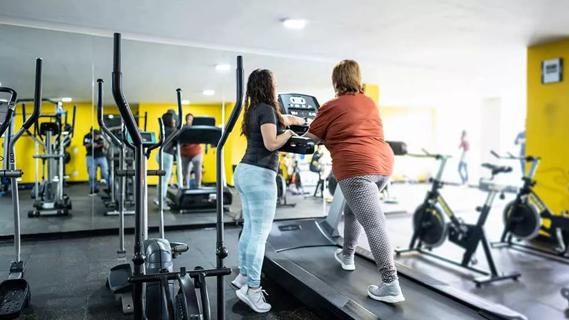
Ask questions, get referrals and consider if someone is a good fit for you and your fitness goals
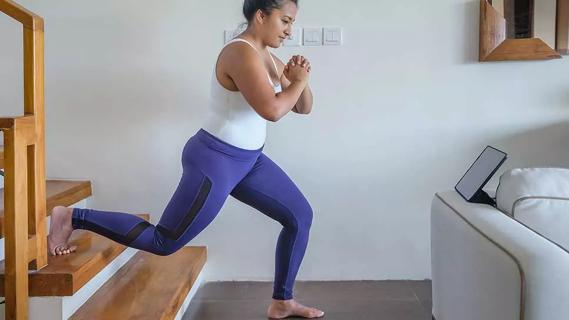
Expect a few bumps in the road, work out for the right reasons and give yourself some credit

Jump into the swing of things to improve your coordination, burn calories and get your heart rate going
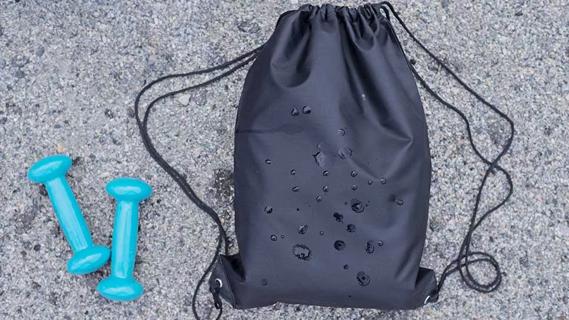
Walking with a weighted backpack is a low-impact, full-body workout that’s growing in popularity
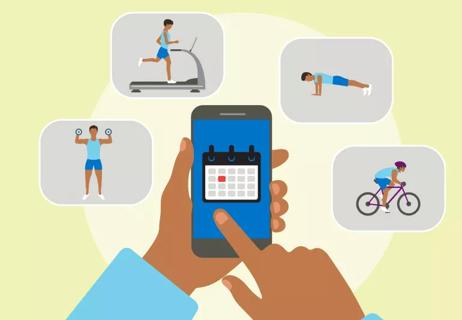
Meet your workout goals by accounting for frequency, intensity, time and type
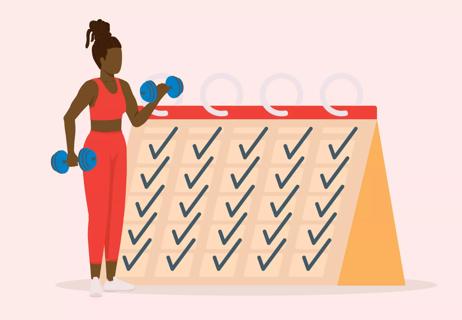
This modified challenge offers a head start on healthier habits
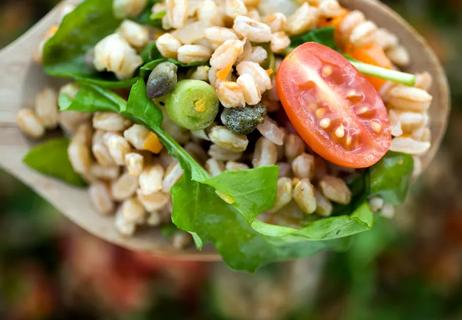
Type 2 diabetes isn’t inevitable with these dietary changes

Applying a hot or cold compress can help with pain